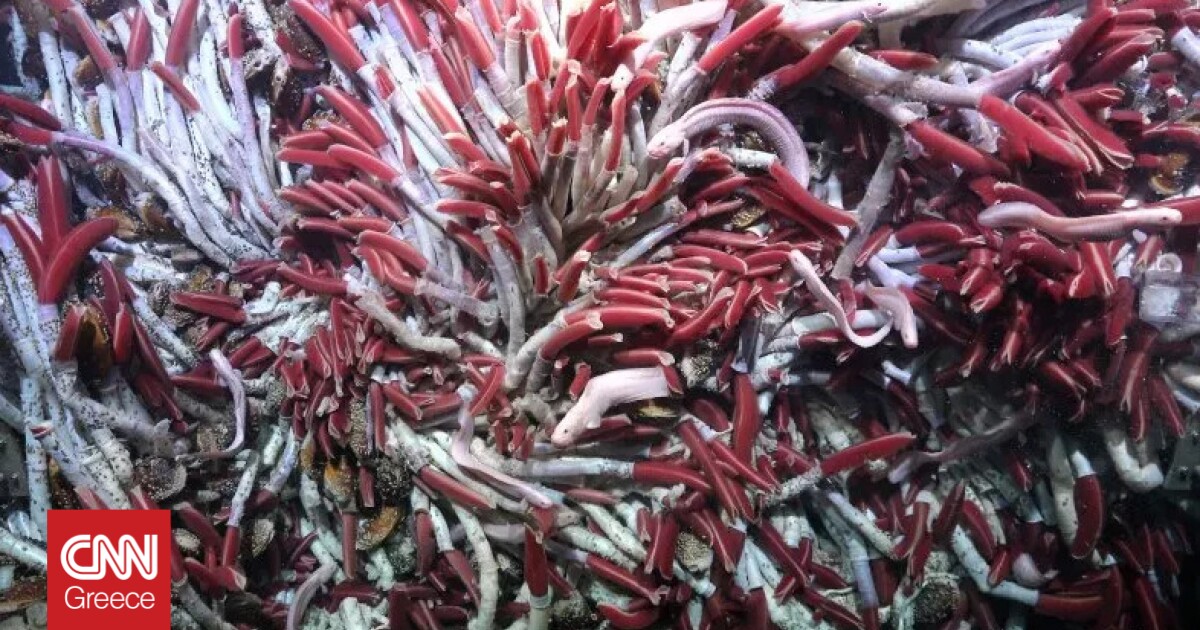
the Scientists Discover a strange and wonderful habitat filled with a variety of strange creatures under an underwater volcano.
researchers from Schmidt Institute of the Oceansa non-profit research organization, found under hydrothermal vents in Eastern Pacific is rising In Central America, discover a new ecosystem teeming with life, including worms and snails.
This unprecedented system was revealed by scientists aboard the research ship hawkwhich has been exploring hydrothermal vents 8,200 feet below the surface.
Schmidt Institute of the Oceans / CC BY-NC-SA
Scientists knew it deep down in Ocean Where light does not reach, life exists near the hydrothermal jets that provide the ingredients needed to create it. But recently, researchers at the Schmidt Institute of the Ocean used a robotic submarine to see what lies beneath these jets, and the results surprised them.
“On land, we’ve long known about animals that live in underground cavities and in the ocean with animals that live in sand and mud, but for the first time, scientists have looked for animals below hydrothermal vents,” said the institute’s executive director. Jyotica Firmani.
“This truly remarkable discovery of a new ecosystem, hidden beneath another ecosystem, provides new evidence for life in wonderful places.”
Life can thrive in even the most inhospitable places, including hydrothermal vents. These holes were first discovered in 1977 Eastern Pacific RidgeThey are underwater hot springs that spew hot, mineral-rich seawater from tectonically active areas.
Temperatures around the vents can reach 370 degrees Celsius and there is no light at all due to its depth. However, chemotactic bacteria thrive, and many other species, ranging from crabs and worms to octopuses, have been seen living around the airways.
Sebastian Rove Institute/Schmidt Ocean/CC BY-NC-SA
However, this mission marks the first time that life has been found under vents. Organisms are discovered after an underwater robot, ROV Substian, drilling into the hole, removing a block from the ocean floor and inserting lattice boxes in its place. Later, the researchers saw a whole new ecosystem under the boxes, coming from the sea floor.
When a new outlet forms, it is quickly colonized by life, and its mechanisms have remained a mystery until now.
Among the species they found hiding under the hole were tubeworm larvae, which are rarely seen above the holes during their larval stage. This led scientists to theorize that the larvae of this worm could be transmitted through a fluid vent beneath the ocean floor.
“The discoveries made on each of the Schmidt Ocean Institute’s missions reinforce the urgency to explore our entire ocean so we know what’s in the deep sea,” said Wendy Schmidt, president and co-founder of the institute.
“Discovering new creatures, landscapes and now, a whole new ecosystem that highlights how much we still have to discover about our surroundings – and how important it is to protect what we don’t yet know or understand.”
The researchers hope to publish their findings in a journal later this year.

“Avid problem solver. Extreme social media junkie. Beer buff. Coffee guru. Internet geek. Travel ninja.”





More Stories
New AI Model GPT-4o presented by OpenAI – Artificial Intelligence
One of Google’s most important apps will stop working on older Android devices
iPad Pro: The press that crushes…human creativity – Silicon Valley takes care of it